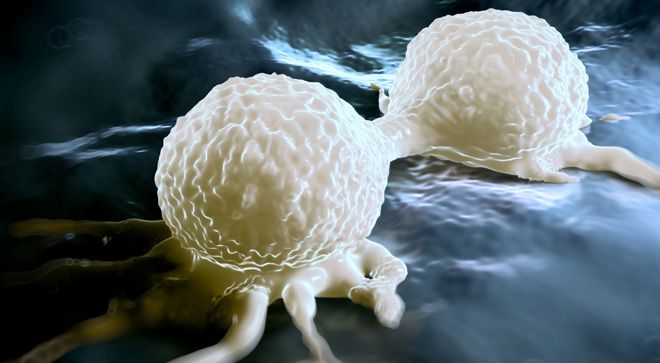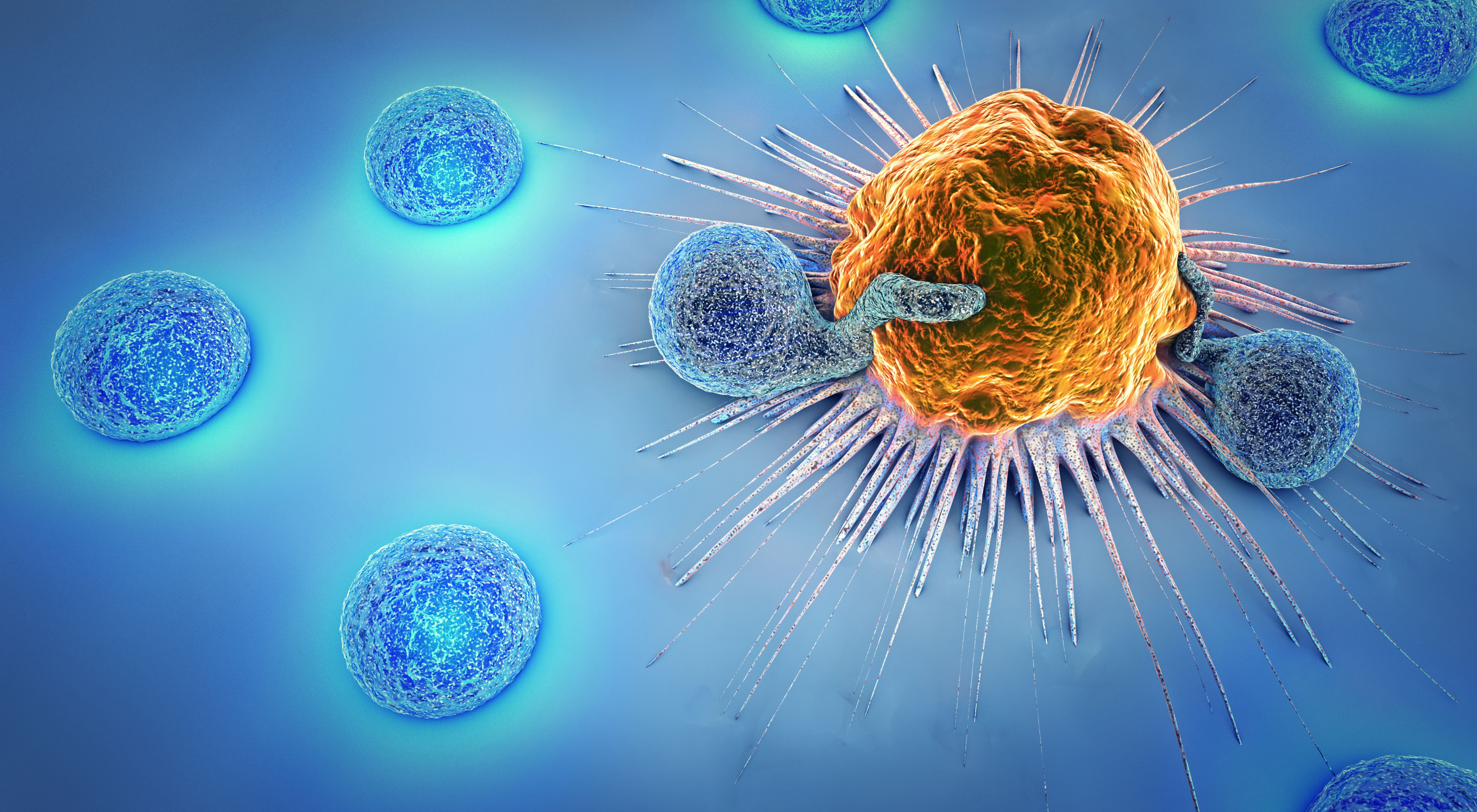Article
‘Getting Close’ To Making Stem, Bone Marrow Transplants Safer for Patients With Blood Cancer
Author(s):
Patients with blood cancer may develop serious infections after transplants, but a T-cell therapy may improve symptoms and side effects.
Posoleucel, an off-the-shelf T-cell therapy, was deemed feasible, tolerable and effective for the treatment of infections following a hematopoietic cell transplantation (HCT), according to recent study results.
An HCT, also known as a bone marrow or stem cell transplant, is a potential treatment option for patients with blood cancers such as leukemia, lymphoma or multiple myeloma. However, these transplants often cause infections that may increase the risk of morbidity or mortality among patients. In addition, there is a lack of effective treatments for these viral infections, said Dr. Thomas Pfeiffer, lead author on the study and assistant professor at the Washington University School of Medicine in St. Louis.
But, more recently, T-cell therapies such as posoleucel have begun to show promise in treating infections for this patient population.
“A lot of patients get into trouble with viral infections with not a lot of good therapeutic options left,” he said in an interview with CURE®. “And the purpose of this particular study was to investigate a quite novel product that has specificity not just to (kill) one or two viruses, but six viruses in total, to treat the variety of infections that can occur. Often simultaneously, we see patients that have more than just one viral infection after transplant.”
The trial, which was published in Clinical Cancer Research, included 58 patients who had undergone HCT.
Results demonstrated an overall response rate (a percentage of patients with a partial or complete response to treatment) of 95% six weeks after the first infusion. Of the 12 patients who had two or more infections at the start of the study, 10 (38%) had a clinical response for all evaluable viruses. And of 23 patients who were treated for refractory BK virus-associated hemorrhagic cystitis (inflammation and bleeding of the bladder’s lining), 74% of symptoms had resolution six weeks after first infusion.
“The results are certainly positive,” Pfeiffer noted. “In summary, this is a really good salvage option for patients with refractory infections after transplant who failed in other therapies, might otherwise get in trouble and get very sick.”
Dr. Bilal A. Omer, senior author on the study and assistant professor at Texas Children’s Hospital in Houston, explained that an option such as posoleucel is important for these patients they are immunosuppressed — meaning they are more prone to infection — for up to six months after transplant.
“These viral infections can cause quite fairly serious symptoms in some cases,” he said in an interview with CURE®. “Not all of the patients, but a significant proportion of the patients do have symptoms. The symptoms, for the most part, did improve and, in most cases, actually resolved in these patients. I think there's one of the aspects what this means for the patient's transplant and ultimate outcome. But I think it also is something that, with very few side effects, can actually make the patients feel better after you treat them.”
The therapy was well tolerated with no infusion-related side effects or immediate concerns related to it. Pfeiffer also highlighted that this is a third-party off-the-shelf therapy, meaning they can get it to patients faster than other conventional therapies.
“(It) has the great advantage of being immediately available for these patients, oftentimes within a matter of 24 to 48 hours. And time really does matter if you're treating sometimes rapidly progressive viral infections,” Pfeiffer said. “I think overall, (it is a) relatively well tolerated therapy, quite effective and perhaps with (fewer) side effects than conventional antiviral medications that we use.”
Omer said that the exciting part is that this trial was positive enough to result in not only one but two separate phase 3 trials that are currently ongoing. He hopes those trials are successful and will lead to an approval from the Food and Drug Administration.
“I think that we're getting close to actually having another option available for patients with viral infection after stem cell transplant,” Omer concluded. “And I think we're kind of moving towards making the bone marrow transplant and stem cell transplant (and) process safer and less risky overall. So, I think this is another step in that direction.”
For more news on cancer updates, research and education, don’t forget to subscribe to CURE®’s newsletters here.




